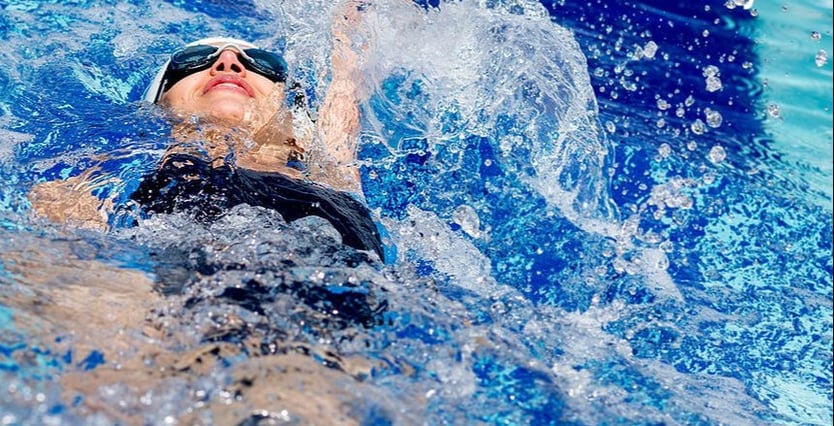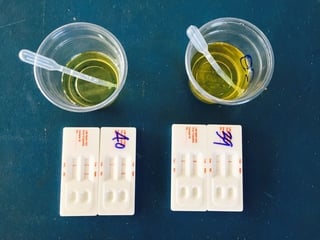Share this
how microsampling will change sports drug testing
by Neoteryx Microsampling on Aug 10, 2017 8:00:00 AM
For sports fans and athletes, the topic of drug testing has become more heated and complex in recent years. Many athletes competing in the Olympics or other competitive sports events have tested positive for performance enhancing drugs (PEDs).
Detection of PEDs has been the basis for suspensions of athletes in nearly every sport, and this has become a topic of conversation in talk shows and news commentary. Because sports doping has become so problematic, the World Anti-Doping Agency (WADA) and other sports agencies now require routine drug testing of athletes to be performed randomly before or after events. 
Urine Testing for Athletes as an Anti-Doping Measure
Conventional urine sampling for the presence of anabolic steroids and other banned substances can be cumbersome. Liquid urine samples of +100ml are typical and must be analyzed immediately or refrigerated to 2-8°C (35-46.4°F) until analysis can be performed.
New Approaches to Urine Specimen for Testing Athletes
 Two newer techniques for urine sampling reduce the need for refrigeration and storage of the urine samples. The newer methods can be used to eliminate the expense and handling difficulties of body fluids.
Two newer techniques for urine sampling reduce the need for refrigeration and storage of the urine samples. The newer methods can be used to eliminate the expense and handling difficulties of body fluids.
These advances are a result of improved evaluation techniques and new innovations in sampling devices.
Urine Microsampling
Two proven microsampling methods are available to evaluate urine samples for the presence or performance enhancing drugs. These are:
DUS: Dried Urine Samples (DUS) are drops of urine placed on specially treated cards and then dried at ambient temperatures. Samples can be stored and transported without special handling or refrigeration prior to analysis.
VAMS: Volumetric Absorptive Microsampling using a Mitra® microsampling device extracts a fixed volume of approximately 10µl of urine from a larger urine sample that was collected in a cup. Once the fixed 10µl quantity of urine is drawn into the the absorptive tip of the Mitra device, the collected specimen on the device can be easily transported and stored without refrigeration.
Recently the Italian Ministry of Health Technical Committee conducted a test aimed at detecting doping in athletes using microsampling devices with the VAMS® technology. The test determined if the VAMS sample collection system would work equally well with plasma, urine, and oral fluids. The result, according to Principal Investigator Laura Mercolini of the University of Bologna, was that the VAMS sampling devices “worked flawlessly” when compared to conventional sampling analyses.
Advantages of Microsampling Urine Specimen for Athlete Drug Testing
The benefits of urine testing with portable microsampling devices include:
- Collection of a fixed volume of urine
- Easy storage and transportation
- Direct sampling with minimal training required
- No after-sampling processes
- Sample stability towards enzymatic and bacterial activities
- Cost and time savings
- Amenable to automation
Conventional methods of fluid testing when the laboratory is busy or off-site require expensive refrigeration and special handling. If mishandled, samples naturally deteriorate causing distorted results. Microsampling arrests the deterioration of the urine sample and provides a dependable result.
Learn more about urine microsampling in our Microsampling Resource Library:

Share this
- Microsampling (206)
- Research, Remote Research (119)
- Venipuncture Alternative (105)
- Clinical Trials, Clinical Research (83)
- Mitra® Device (73)
- Therapeutic Drug Monitoring, TDM (51)
- Dried Blood Spot, DBS (39)
- Biomonitoring, Health, Wellness (30)
- Infectious Disease, Vaccines, COVID-19 (24)
- Blood Microsampling, Serology (23)
- Omics, Multi-Omics (21)
- Decentralized Clinical Trial (DCT) (20)
- Specimen Collection (18)
- Toxicology, Doping, Drug/Alcohol Monitoring, PEth (17)
- Skin Microsampling, Microbiopsy (14)
- hemaPEN® Device (13)
- Preclinical Research, Animal Studies (12)
- Pharmaceuticals, Drug Development (9)
- Harpera Device (7)
- Industry News, Microsampling News (5)
- Antibodies, MAbs (3)
- Company Press Release, Product Press Release (3)
- Environmental Toxins, Exposures (1)
- July 2025 (1)
- May 2025 (1)
- April 2025 (2)
- December 2024 (2)
- November 2024 (1)
- October 2024 (3)
- September 2024 (1)
- June 2024 (1)
- May 2024 (1)
- April 2024 (4)
- March 2024 (1)
- February 2024 (2)
- January 2024 (4)
- December 2023 (3)
- November 2023 (3)
- October 2023 (3)
- September 2023 (3)
- July 2023 (3)
- June 2023 (2)
- April 2023 (2)
- March 2023 (2)
- February 2023 (2)
- January 2023 (3)
- December 2022 (2)
- November 2022 (3)
- October 2022 (4)
- September 2022 (3)
- August 2022 (5)
- July 2022 (2)
- June 2022 (2)
- May 2022 (4)
- April 2022 (3)
- March 2022 (3)
- February 2022 (4)
- January 2022 (5)
- December 2021 (3)
- November 2021 (5)
- October 2021 (3)
- September 2021 (3)
- August 2021 (4)
- July 2021 (4)
- June 2021 (4)
- May 2021 (4)
- April 2021 (3)
- March 2021 (5)
- February 2021 (4)
- January 2021 (4)
- December 2020 (3)
- November 2020 (5)
- October 2020 (4)
- September 2020 (3)
- August 2020 (3)
- July 2020 (6)
- June 2020 (4)
- May 2020 (4)
- April 2020 (3)
- March 2020 (6)
- February 2020 (3)
- January 2020 (4)
- December 2019 (5)
- November 2019 (4)
- October 2019 (2)
- September 2019 (4)
- August 2019 (4)
- July 2019 (3)
- June 2019 (7)
- May 2019 (6)
- April 2019 (5)
- March 2019 (6)
- February 2019 (5)
- January 2019 (8)
- December 2018 (3)
- November 2018 (4)
- October 2018 (7)
- September 2018 (6)
- August 2018 (5)
- July 2018 (8)
- June 2018 (6)
- May 2018 (5)
- April 2018 (6)
- March 2018 (4)
- February 2018 (6)
- January 2018 (4)
- December 2017 (2)
- November 2017 (3)
- October 2017 (2)
- September 2017 (4)
- August 2017 (2)
- July 2017 (4)
- June 2017 (5)
- May 2017 (6)
- April 2017 (6)
- March 2017 (5)
- February 2017 (4)
- January 2017 (1)
- July 2016 (3)
- May 2016 (1)
- April 2016 (2)


No Comments Yet
Let us know what you think